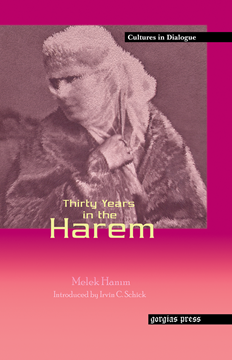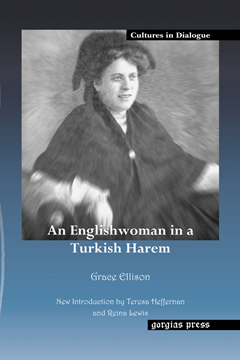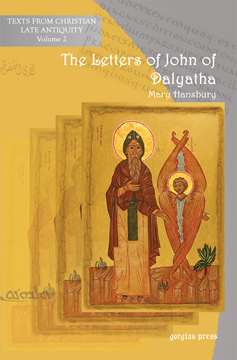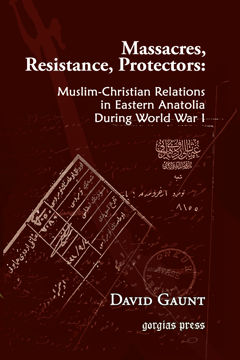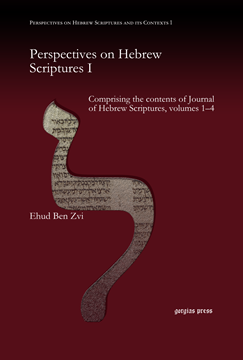Thirty Years in the Harem
New Introduction by Irvin C. Schick
By Melek Hanım
Series: Cultures in Dialogue: First Series 1
ISBN: 1-59333-208-4
Melek Hanım, an Ottoman woman of Greek, Armenian, and French heritage, accompanied her husband to various postings in Palestine and Serbia, and shared with him the frustrations of the arbitrary periodic dismissals that characterized late Ottoman politics. Her account of life in Turkey contains details of political intrigue, corruption and demonstrates the influence and mobility available to women in the official households of the Ottoman elite. Filled with maneuvers, murder, divorce, political machinations, and vengeance, Hanım's life was an attempt to gain access to property she viewed as legitimately her own. This book was written during her later exile in Paris.
$106.00 (USD) $63.60 (USD)
An Englishwoman in a Turkish Harem
New Introduction by Teresa Heffernan and Reina Lewis
Series: Cultures in Dialogue: First Series 11
ISBN: 978-1-59333-211-2
Grace Ellison (d. 1935) actively encouraged dialogues between Turkish and British women at the outset of the twentieth century. Connected with progressive Ottoman elites discussing female and social emancipation, Ellison stayed in an Ottoman harem. Working as a respected journalist, she published articles about British-Turkish relations, Turkish nationalism, and the status of women across cultures. This book recounts Ellison’s stay with her friend Fâtima and features reports on motherhood, employment, polygamy, slavery, harem life, modernization, veiling, and prominent women writers. Despite an impressive legacy, Ellison and her work have almost disappeared from the historical record; the republication of this 1915 work aims to address this neglect.
$154.00 (USD) $92.40 (USD)
An Englishwoman in a Turkish Harem (paperback)
New Introduction by Teresa Heffernan and Reina Lewis
Series: Cultures in Dialogue: First Series 11
ISBN: 978-1-59333-309-6
Grace Ellison (d. 1935) actively encouraged dialogues between Turkish and British women at the outset of the twentieth century. Despite an impressive legacy, Ellison and her work have almost disappeared from the historical record; the republication of this 1915 work aims to address this neglect.
$99.00 (USD) $59.40 (USD)
The Letters of John of Dalyatha
Series: Texts from Christian Late Antiquity 2
ISBN: 1-59333-341-2
John of Dalyatha (690-780 CE) was a monk from a monastery near the Turkey-Iraq border. After living in the monastery for only seven years, he received permission to live a solitary life in the over 9,000 ft high mountains of Dalyatha where he spent most of his life. When he became too old to live on his own, he came down from the mountains, formed a community around himself and wrote these works. In them, John outlines the life itinerary of those who are baptized, the "Way of Wonder" - leading to the vision of God.
$80.00 (USD) $48.00 (USD)
Massacres, Resistance, Protectors
Muslim-Christian Relations in Eastern Anatolia during World War I
By David Gaunt
ISBN: 1-59333-301-3
This is a pioneering historical investigation of the Assyrian, Chaldean, and Syrian Christian minorities during World War I, who suffered the same fate as the Armenians. Ethnic cleansing and large-scale massacres occurred throughout northern Mesopotamia and parts of Ottoman-occupied Iran. Based on primary sources from official archives, as well as hitherto unused manuscript sources and oral histories published here for the first time, this book attempts to give a full picture of the events of 1915. The book concentrates on the Assyrians of Urmia and Hakkari and on the Syrians of Diyarbekir province, particularly in Tur Abdin.
$164.00 (USD) $98.40 (USD)
Perspectives on Hebrew Scriptures I
Comprising the contents of Journal of Hebrew Scriptures, volumes 1–4
By Ehud Ben Zvi
ISBN: 978-1-59333-310-2
This volume incorporates all the articles and reviews published in Volumes 1-4 (1996-2003) of the Journal of Hebrew Scriptures.
$318.00 (USD) $190.80 (USD)
